My Little Buda
After this first week of the new regime, cat posts to Substack Notes are abundant. We all rely on our animal friends in times of stress. Here's my offering.
UPDATE: I apologize that the comments for this post were PAID ONLY. I never want to charge for comments. So, it’s fixed now to FREE TO EVERYONE as it should be.
He came to the shelter with his "roommate," another Norwegian Forest Cat. The two of them had shared an apartment for five years. After several failed attempts to adopt three other cats that came to the Cat Room for socialization, I cast my eye upon him.
One of the previous cats was literally wrenched from my arms the day I was ready to adopt him. I missed two others by hours as well. Surely both these beautiful animals would be swept up before my next shift.
Luckily, I was wrong.
The grey cat found a home within a week. The other cat, Tar, as his name implied, wore a thick, silky coat of black fur. Every time I held him in my arms, his firm, muscular body pressed perfectly against my breast. Clearly, as he cringed deeper into his kennel, Tar needed to find his forever home.
Black animals take longer to adopt. The reasons for which frustrated me as being totally illogical and based on ancient superstitions and prejudice. Even so, I could not believe this luxurious, loving cat still languished in the animal shelter.
After three weeks, it was obvious he wouldn't be wrenched from my arms. Finally, I committed to this sixteen-pound beauty. Why did it take me so long to decide? There were circumstances at home, however, that made me hesitate.
We had a crazy Border collie that proved so frantic and cat-resistant, my previous feline, Snigglefritz, fled to parts unknown. A working dog, Cinch didn't understand play. During one attempt to frolic with the dog, Snigs rolled on his back and nearly got disemboweled. It was time for him to bail. For two years I grieved, even writing a novel about it to deal with the depression. I badly needed another muse, but held out hope that Snigs would return.
I borrowed a carrier from the shelter and tucked Tar inside for the trip home. I reckoned Cinch had calmed considerably over time. Besides, he was half her size. A neighbor once remarked, "His tail alone probably weighs ten pounds." Because of that, he might intimidate her enough to leave him be.
Along with the food, bowls, and other equipment to set him up at home, I purchased a baby gate to corral him into a safe room. Cinch couldn't pester him until he became acclimated to his new home and Cinch's wacko energy.
That gate stood for about an hour before he jumped over it, sending it to the floor with a deafening crash. After that, Cinch didn't touch him. She was scared to death of this leaping monster. What other feats could It perform? That first hurdle decided their spatial boundaries. In fact, these two eventually forged a strange but wonderful relationship.
Now what to name him?
Tar suited his flawless coat. Not a trace of white on him. His silken fur slid through the comb like wind through a screen. No knots or mats. What's more, he loved to be groomed, jumping on the bed as soon as he saw the comb in my hand. Many pleasant hours separated the wool from his mane while we bonded.
Unlike other cats I'd seen, his head was broad with a wide nose and a mouth that curled rakishly across his face. And he loved to cuddle, sprawling his magnificent self across my lap. My heart was his! So we named him Beau … for a while.
As we watched him interact with Cinch, or should I say tolerate her antics, we realized he had mastered the spiritual state of a monk. His regal bearing and calm demeanor inspired another name that was far more appropriate.
Buda.
For the next decade, he changed from frightened pussycat to confident tom, within his fenced garden territory, that is. He became a master lizard hunter and even killed and ate an unfortunate blue lizard that had wandered into the house. In another flagrant display of bravado, he rolled over in the open yard to bear his belly to a huge Ferruginous hawk resting in our trees. Though nearly two feet tall, the hawk looked at this foolish animal, decided it must be rabid, and flew away.
Once outside that fence, however, Buda was toast. In one altercation I witnessed, another tom pinned him against a wall with his belly exposed. Here we go again. I screamed to halt the impending evisceration A week later, he scaled the six-foot fence to escape yet another tom, who merely peeked over the top of the fence before giving up the chase.
Buda, therefore, spent his remaining years being a champion lap cat, often spreading himself across my husband's broad chest as if it were a chaise lounge. Jeff loved it. Buda was the only cat that gave him the slightest bit of notice, much less affection. I later read that Norwegian Forest Cats love to hang out with their humans. Buda checked off all the boxes describing this breed and, after Snigs' ungrateful departure, loving its humans was at the top of my list.
That deep affection grew along with his comic antics despite his imperious bearing. We adored him and received much the same from him. That's why it was so horrible to lose him while traveling a year ago. Wedgies are prone to cardiomyopathy: absolutely the most painful way for an animal to die. Luckily, we found an emergency vet, Advanced Veterinary Clinic in SLC, UT, who admitted him immediately and relieved him of his writhing pain. We entrusted his body to the vet until we could pick him up on the way out of town.
Back at the hotel, we sat in shock. Then I remembered I had combed Buda a few hours prior to his death. I fished the wad of fur out of the trash bin and folded it in my palm. Through the events of that weekend, I tucked "My Little Buda" into my pocket and clutched it any time I felt the tears coming. It got me through a family gathering and other daily occurrences for several weeks.
By the end of that weekend, it had felted into an oval mass that I kept on a kitchen shelf alongside mementos of our deceased animals. That shelf has become a little shrine, displaying collars, cards, dried flowers, and natural objects including feathers, a piece of wasp comb, and an odd stone with dozens of tiny holes in it.
Burial in Buda's garden worked for a while until the coyotes discovered his grave. Jeff dug him up and encased him in a box for cremation. Now he holds a place of honor on another shelf. I realize it's silly, but it calms my heart to know his body is safe. And my favorite photo of him greets me each time I pass.
Every now and then, I see movement out of the corner of my eye as if he's still prowling the house for lizards. It's probably just one of my floaters casting its shadow. Or maybe it's the mouse with whom Buda had a special arrangement. I later found a stash of Buda's kibble under the couch cushions.
He was appropriately named. With the exception of lizards, all creatures were safe in his presence. And I'm glad we were able to enjoy eleven good years with him.
If you enjoyed this post, feel free to explore other writings in the Ring Around the Basin Archive. I also love to read your comments, so please share your thoughts. Let’s start a conversation. And if you wish to support my writings, please consider subscribing or upgrading to a paid subscription. It’s now only $50/year. Even better, I would appreciate it if you could share Ring Around the Basin with your friends. Thank you!
All my books, Paradise Ridge, When the Horses Come and Go, and Ghost in the Forest are currently available on Kindle. Ghost in the Forest, is also available in paperback. Paradise Ridge is out-of-print, but the Kindle version is re-edited and better quality.
Book Review of Ghost in the Forest:
"Ghost in The Forest' is a great read! Take note People. If you love stories about environmentalism and nature, its clash with urban mindsets, as well as personal transformation, this is the book for you!
"Ghost in The Forest" is a quick 126-page read. It's the story of Dori, a woman trapped in a mix of grief over parental loss and refusing to accept how her hometown and her friends have changed over the years. Because of this, Dori has become a recluse and a self-imposed misanthrope who finds more comfort amongst the hiking trails around her hometown of Morristown than in her dealings with the raw reality of other humans.
The book, in some ways, resembled Edward Abbey’s “Desert Solitaire” in that the story follows a protagonist's love of nature and angst about humans encroaching on it. In this case, it’s how Morristown is transforming into a mountain biking destination where cyclists run rampant on trails and nature.
However, a tragedy involving said mountain biking becomes a major pivot point for Dori, leading to a series of events that eventually bring about personal evolution and discovery.
If you're a nature lover, this book is a must-read. It beautifully portrays the clash between environmentalism and urban mindsets and the journey of personal transformation. The book's vivid descriptions of nature and the protagonist's love for it will surely intrigue you.
Paradise Ridge Review by western author D. B. Jackson:
If you draw circle roughly around an area that includes northern Nevada, southern Oregon, and southern Idaho, within that circle exists a culture and people who live a lifestyle largely untouched by modern values. These are the "buckaroos" and Basque characters author Sue Cauhape brings to life in her literary novel, "Paradise Ridge".
Leandro, the illegitimate seventh son of patriarch Xavier Arriaga and his mistress, Gisela, is at the center of this intriguing story that travels exceedingly successfully at both the personal level of the characters, as well as the compelling level where the story is told.
Cauhape writes in a literary style that reminds me of Annie Poulx. Paradise Ridge, on the surface, appears to be an upscale Western novel...once inside the pages, you will soon discover a potential classic waiting to be discovered.
I rated this book a 5...because that's all the stars there were.


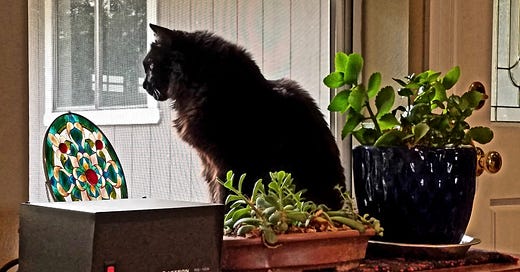



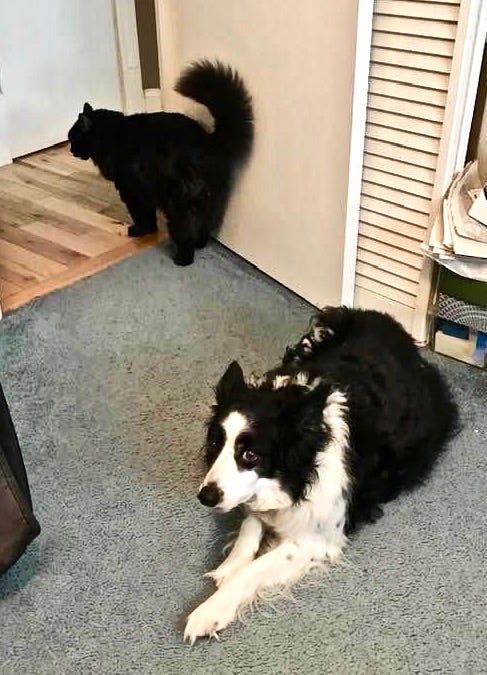

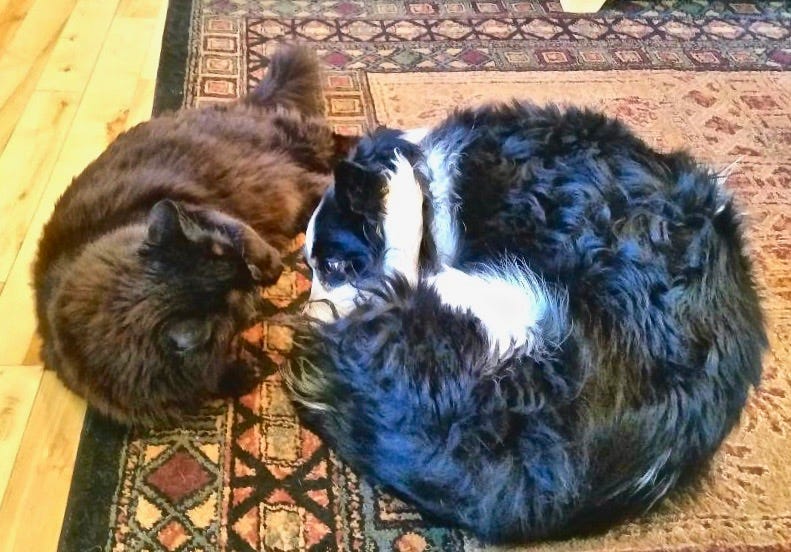
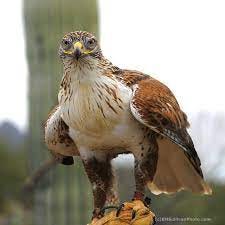

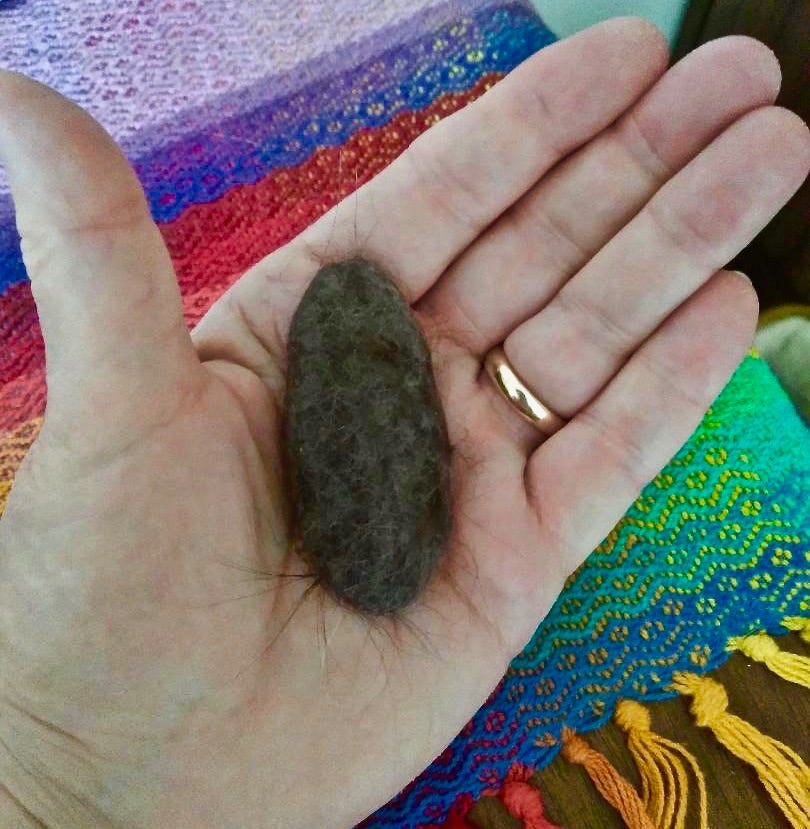



Sue, what a loving tribute to a cat with soul.